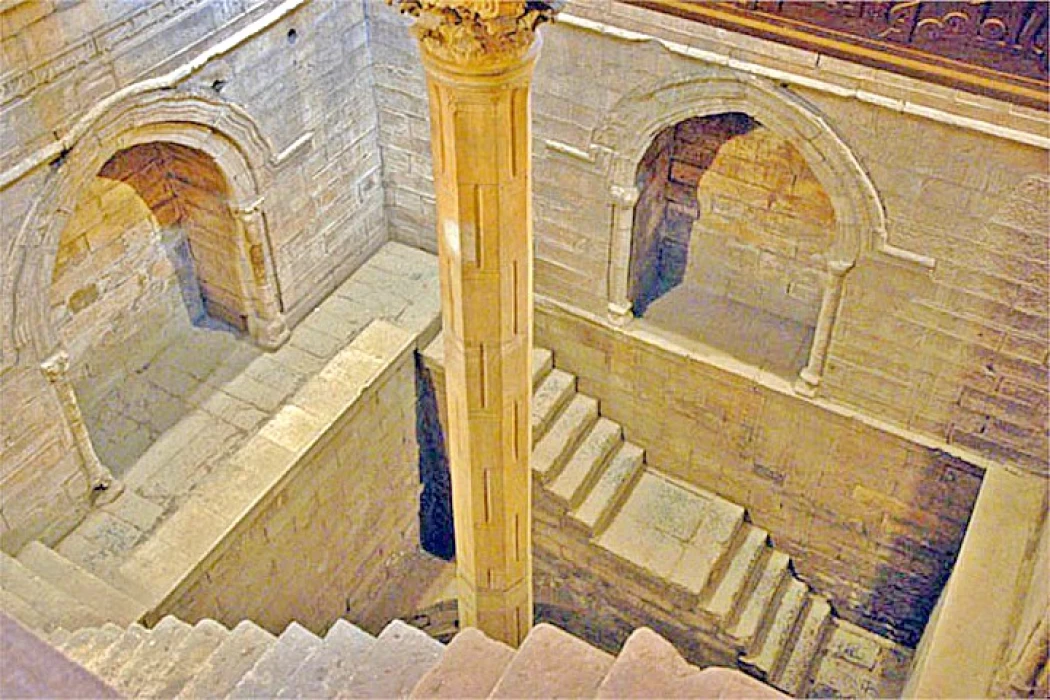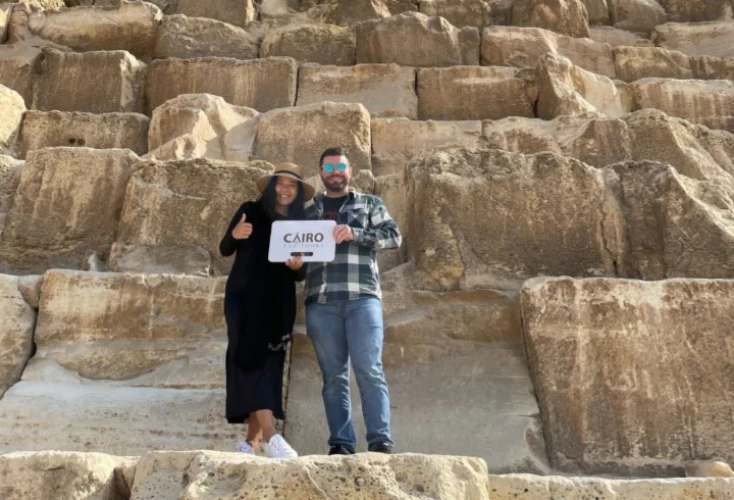
The Roda Nilometer in Cairo | Annual Flooding of the Nile
The Roda Nilometer in Cairo
Each year, the level of the Nile River rose and the water covered the entire Nile Valley, then retreated leaving fertile deposits of alluvial soil. Sometimes, however, the water did not flood the whole agricultural area and this led to poor crops and sometimes famine.
To predict the size of the crops from year to year, the ancient Egyptians built a series of wells called Nilornetri, one of which is still visible, carved in the rocks of the island of Roda.
The island of El-Roda, which faces Old Cairo in the southern part of the city, has been inhabited since the age of the pyramids. It was used both as a port and as a shipyard. The Romans built a fortress there, the twin of that of Babylon.

Roman Era in Egypt | Egypt Roman Period
The island is no longer that heavenly garden described in the Thousand and One Nights, but fortunately modern residential buildings have not invaded the southern tip of the island, which is still a pleasant area and houses the Nilometer.
In ancient times the river was much wider, today only a narrow channel separates the island and the Corniche on the other side, crossed by a wooden footbridge that connects the Nilometer to Coptic Cairo.
In the image on the left, the Nilometer was seen from the then-home of Suleiman Pasha, around 1880.
Given its favorable geographical position, this place has always been home to miles. The current one dates back to the year 861 but has obviously undergone various modifications and renovations: the conical dome kiosk that covers it is the modern remake of a Turkish building.
The Nilometer consists of a large well covered with stone, communicating with the river bed, on the bottom of which there is an octagonal column that acts as a graduated scale. If you suffer from vertigo remember that the narrow staircase that goes down is not provided by a handrail. Water entered this well from three tunnels, now closed, each placed at a different height.
The water level was assessed during an annual ceremony: if it was of a sufficient level, the celebrations began, otherwise, a period of intense prayer and fasting began, in ancient times also associated with sacrifices for the river gods.
The decoration visible today also includes four-pointed niches, similar to the Gothic arches of medieval European architecture; however, they precede the Gothic style for some hundreds of years and it has been hypothesized that they constitute the first example of pointed arches in the world. Although not particularly old, the elaborate carved and painted arabesques on the wooden ceiling are truly extraordinary.
Planning any tours to Egypt? or from our varieties of tours from Cairo, you can easily see the Roda Nilometer in Cairo with Cairo Top Tours.
You can find out really cool things about Mummification In Ancient Egypt | The Ancient Egyptian Mummification Process preserved their bodies after they died. Some people went to Egypt and learned all about it.
Latest Articles
Admin
Seabourn Sojourn Cruise Stops in Safaga Port
The Seabourn Sojourn, the flagship vessel of Seabourn Cruise Line's ultra-luxury fleet, was built in 2008 at the T. Mariotti shipyard in Genoa, Italy. Measuring 198 metres, it can accommodate up to 450 guests in its 225 spacious all-suite staterooms.
Admin
Norwegian Sky Cruise Stops in Safaga Port
Norwegian Cruise Line operates a cruise ship called the Norwegian Sky. It was constructed in 1999 and can accommodate 2,004 passengers in addition to 878 crew members. The ship has several dining establishments, lounges and bars, a spa and fitness center, swimming pools, and a number of entertainment areas.
Admin
Explora II Cruise Stops in Safaga Port
Explora II, the second vessel in the Explora Journeys fleet, sets sail in 2024 to redefine luxury cruising. With 461 ocean-front suites, 9 culinary experiences, and 4 pools, this haven of sophistication and sustainability promises an unforgettable "Ocean State of Mind" journey to inspiring destinations.
Admin
Mein Schiff 6 Cruise Stops in Safaga Port
The Mein Schiff 6 is the latest cruise ship in the renowned TUI Cruises fleet, offering passengers a luxurious and sophisticated cruise experience. At 315 metres long, this floating resort features a range of dining options, entertainment, and recreational facilities, including a spa, fitness centre, and sports amenities.
Admin
Mein Schiff 4 Cruise Stops in Safaga Port
When the Mein Schiff 4 cruise ship docks in Safaga, Egypt, passengers are granted access to a realm of ancient wonders. Aboard this state-of-the-art vessel, guests can embark on meticulously curated shore excursions that showcase the region's most iconic landmarks, including the Giza Pyramids, the enigmatic Sphinx, and the remarkable tombs and temples of the Valley of the Kings in Luxor.
Admin
MS Europa Cruise Stops in Safaga Port
The Silver Moon, Silversea's latest flagship, is a luxury cruise ship that offers an exceptional travel experience for Venezuelans exploring Egypt. With a capacity of 596 guests and an impressive 40,700 gross tonnes, the Silver Moon maintains the small-ship intimacy and spacious all-suite accommodations that are the hallmarks of the Silversea brand.
















